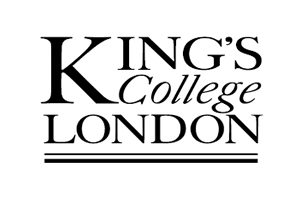Francis Charlton’s Secret Daughter
Joanna Barker
The life of Francis Charlton has been recounted in a previous blog [The India Connection III]. We know that he returned to England from India some time before 1778, since he made his Will in April of that year and gave his address as Welbeck Street, London, saying he was ‘late of Bengal in the East Indies’`. He added three codicils, the last in November 1779, and died on 24th October 1782, by which time he had moved to Lymington in Hampshire.
Francis was a wealthy man. He was not as fabulously rich as some of the ‘Nabobs’ who went to India as penniless youths and returned with fortunes that enabled them to buy country estates and seats in parliament, but he was in modern terms a millionaire. He left individual legacies worth around £15,000, and £30,000 (plus the remainder of his personal estate) to his daughter Elizabeth. She was only twelve at the time of the first Will, and Francis was clearly conscious of the temptation such a large amount would represent to fortune-hunters. To protect her, he appointed three of his best friends as trustees and specified that they were to pay her the entire amount when she reached the age of 21, or if she married before this age with the trustees’ consent.
If, on the other hand, Elizabeth married whilst under age and without her trustees’ consent, the amount due to her would be reduced to £10,000 and the remaining amount divided equally among his nephews. The £10,000 would remain under the trustees’ control, with only the annual income paid out to her. The Will states very clearly that the income would be paid as she directed ‘notwithstanding her coverture’, in other words despite the fact that the law recognised a wife’s income as belonging to her husband. Alternatively, they were to pay it into her hands ‘for her sole and separate use exclusive of any husband she may marry who is not to intermeddle therewith nor is the same to be subject to his debts disposition or engagements’. Francis was determined that his wealth was to go to his daughter and not to be used to pay off the debts of some charming ne’er-do-well.
The trustees carried out their role very conscientiously. When the marriage between Elizabeth Charlton and Matthew Montagu was agreed in 1785, the negotiations between them and Elizabeth Montagu went on for months, and the Marriage Settlement ran to fifty skins of parchment, which Mrs Montagu complained would take seven hours to read.[1] Elizabeth’s fortune had by this time risen to £50,000, and was used to repay mortgages on estates at West Kenton in Northumberland and Allerthorpe and Eryholme in Yorkshire. In return, Mrs Montagu settled these estates on the young couple, and also bestowed on them after her death ownership of her fine new house at Portman Square in London.
The other legacies in Francis’s Will went to his brother John and unmarried sister Elizabeth, and to his nephews Jasper Charlton and George and John Dawson, the children of his brother Jasper and sister Isabella. Several hundred pounds were left to charities such as the Asylum, the Foundling Hospital, the Hospital for Incurable Lunatics and St George’s Hospital near Hyde Park.
However, there is one remaining legacy that raises interesting questions. In his Will, Francis left to Mrs Elizabeth Thomas £350 for her own use and to Frances Coupland £100 for her own use. To his executors he left £300 upon trust for the maintenance, support and education of Frances Coupland (‘now an infant of the age of five years and daughter of the said Frances Coupland’). Upon reaching the age of 21 or marrying with the consent of his trustees, the younger Frances would receive the principal of £300. Curiously, Frances Coupland is not given the title ‘Mrs’; she is described as being ‘now or late of Great Pulteney Street’ in Bath.
In his later codicil, Francis revoked the legacy to Elizabeth Thomas, on the grounds that ‘she has already received ample satisfaction’. So who were these people, who were not identified as relatives, friends or servants, and why did they benefit from Francis Charlton’s Will?
A letter in the Northumberland Record Office[2] casts some light on the matter. It was written on 10th June 1789 by Matthew Montagu and addressed to his ward, meaning a person for whom he had taken legal responsibility. From internal references and other documents in the archive, it is clear that this was Frances Coupland, who was fifteen years old and living in Kendal in Cumbria in the family of a Mr & Mrs D’Abbadie (whose name suggest they were descended from French Huguenots). Matthew’s letter quivers with righteous indignation: in replying to a letter from Frances he berates her for her bad spelling and handwriting, and in particular for her ‘very improper expressions in it towards your benefactress Mrs Montagu, whose conduct towards you I am sure has ever been actuated by the tenderest and most enlightened regard to your interest’. It appears that someone had told Frances that she was to be taken away from the D’Abbadie family and apprenticed to a mantua-maker,[3] and she had objected, insisting that she would prefer to become a teacher or a lady’s companion. What is more, she wished to move to London.
Matthew forcibly points out to Frances that her social status does not entitle her to make such a choice. He can see that she is going to have to earn her living. He explains that:
the place of a teacher (even supposing you qualified) or of a companion to a lady, is in every respect the most uncertain that can be. For to obedience to the humours and caprices of others, in short you would be little better than a servant, and this in an endless prospect without the hope of an improvement in your condition […] On the other hand by a proper diligence and attention to the business of mantua-making you would soon place yourself in a perfectly independent situation. By the time when you came of age [you] would be able to get your bread, and be subject to no obligation or restraint from any person whatsoever. You might then carry on the business, in which your own small pittance of £300 would be of effectual advantage, and become a respectable householder and an useful member of society. And what would be most probable you might settle in a comfortable way in marriage, where with such a business and with industry and a good character you would be a valuable acquisition to a worthy man, and with him might live in a reputable and happy manner, increasing every day in every comfort and leaving to your children the benefits of a good example and the fruits of your industry. In the former situation your condition would at first be uncomfortable and uncertain and would never improve, in the other you would have every comfort, would depend on none but yourself and would advance in every advantage as long as you lived.
One is reminded of Jane Austen’s Emma, where the title character imagines that the fatherless schoolgirl Harriet would be an appropriate wife for the local clergyman rather than for the tenant farmer who is prepared to overlook her illegitimate birth. A lady’s companion had higher social status than a dressmaker, but her position was ambiguous. Mary Wollstonecraft had been both a teacher and a companion, and tartly observed that a governess was little better than an upper servant. Such an amphibious creature was despised by both the classes above and beneath her.
Matthew was particularly insistent that a move to London would be a bad idea, where she would ‘be exposed to many dangers and temptations that it is my duty to guard against’. He hoped that Frances had not already contracted any unsuitable attachment, and said he would make further enquiries on this subject.
In his Will, Francis Charlton described Elizabeth as ‘my daughter and only child’, but his actions lead us to form the suspicion that Frances Coupland was his illegitimate daughter. The £300 he left her would save her from want, but it was nothing to the £30,000 he left to Elizabeth. Matthew felt he was doing her a favour by becoming her legal guardian, and Elizabeth Montagu also helped her in some way, though Frances’ name does not appear in the ledgers of Montagu’s account at Hoare’s bank as a recipient of any money. Her ‘ingratitude’ to both of them enraged him.
There are six further letters in the Northumberland archive[4] that relate to Frances Coupland. Five are written by Elizabeth Nicholson and one by Frances herself. Nicholson appears to have been a woman of limited literacy: her spelling is often phonetic and she does not punctuate or capitalise sentences, which run on like a stream of consciousness. The letters start in November 1791, two years after Matthew’s tirade, and it seems that by then Frances had been apprenticed to Nicholson as a mantua-maker, and had moved to live with Nicholson’s family in Kendal. Nicholson acknowledges receipt of money from Matthew, no doubt to pay for her board and lodging and her training.
On 27th October 1792 Nicholson wrote a letter to Elizabeth Montagu. She explained that she had noticed Frances looking unhappy and on enquiry had found that this resulted from a letter Montagu had sent her in which she encouraged her to continue in the course of mantua-making. Nicholson said that whereas Montagu seemed to think that this business would place a person in a position of ‘affluence and independence’, she knew from experience, having followed it for nearly forty years, that the reverse was true. She earned enough income to keep her from want, but ‘God knows nothing to support old age’; it was ‘a remarkably laborious and tedious employment for trifling advantage’. On top of this, she was convinced that Frances would be unable to support the effort and fatigue of the business, as a result of her delicate constitution: she suffered from headaches and shortness of breath, and although she was willing to work, it would be impossible for her to proceed in this particular line of business. Nicholson nevertheless found her to be ‘a most prudent and deserving young person’, whose propriety of behaviour was much approved of by those who knew her.
Eighteen months later, on 16 February 1794, Nicholson wrote to Montagu again. By this time Frances was on the verge of her twenty-first birthday, and it seems that the idea of her earning her living by dress-making had been abandoned; Nicholson was worried about what would become of her. The income on the £300 she was due to receive on attaining her
majority would be insufficient to keep her, and attempts were being made to find her a husband, for marriage would be ‘the only means to render her happy and secure her a home’. Nicholson assured Montagu that ‘she certainly is a very sensible young person and much respected by her acquaintance and has hitherto conducted herself with great propriety’. If only she had money to go with her looks and manners, she would be sure to be snapped up, but Nicholson lamented that the men in her part of the world were ‘great fortune hunters’. While the search for a husband continued, Nicholson was happy for Frances to continue to live with her.
The final letter was written to Montagu by Frances herself, a few weeks later on 2nd March 1794. In it she thanks Montagu for her ‘generous proposal’: this seems likely to mean that Montagu had offered her further financial support while she waited to be married. However, she continued that ‘as for marriage I am at a loss what to say to you concerning it as this place is not famous for match making. Money is what is sought after, they have not the least chance without it’. She nevertheless assured Montagu that ‘I shall change my life as soon as I can find a suitable person, as it would be the only means to secure me a home’. She signed herself ‘your affectionate ward’, which suggests that, like Matthew, Montagu had assumed public responsibility for the girl until she came of age.
The search for a husband seems to have taken several more years, since according to the Kendal parish records Frances Coupland married William Compston on 11th July 1798. The marriage did not last long, and he re-married in 1802. Her death notice has not been traced: it is highly probable that, like many young women of her time, she died in childbirth. She would have been twenty-five years old.
Montagu’s support for Frances Coupland, apparently the natural daughter of a man she had never met, is an interesting example of her attitude to illegitimacy, which was more sympathetic than might be expected from a lady known for strict moral rectitude. Her brother Morris Robinson fathered a daughter, Mary Arnold, who became a long-term companion to Montagu’s sister Sarah Scott, and was often invited by Montagu to join her on her visits to Bath. When Morris died suddenly in 1777, Montagu expressed disappointment that he had not taken the opportunity in his Will to acknowledge that she was his daughter, and she paid Arnold an annuity following Scott’s death. Her youngest brother Charles was also found to have a secret daughter: in 1776 he announced that he was married to Mary Dawkes, sister of Morris’s wife, and their daughter Sarah was eighteen years old. Montagu was sceptical as to whether the marriage had actually taken place, but she said she would act with kindness to her niece who had never done any harm to anyone.[5] Sarah went on to marry William Hougham, a respectable resident of Canterbury.
Montagu was equally sympathetic to her maid Susan White, who apparently fell pregnant: indeed, she blamed herself for failing to save her from her seducer. Susan was sent to live in Deal with a friend of Elizabeth Carter (presumably until the baby was born), but was later taken back into Montagu’s service. Montagu arranged for her to marry Joseph Woodhouse, her steward in the north-east, and acted as godmother to her daughter.
Frances Coupland had a brief and rather unhappy life, but thanks to Frances Charlton’s Will and the care taken by Elizabeth and Matthew Montagu, she was not abandoned and was given opportunities in life. Perhaps one day more evidence about her will come to light.
[1] Letter to Elizabeth Carter, 13 July 1785, Huntington Library, MO 3589 [EMCO 4325].
[2] NRO SAN/GEN/EST/1/4/1/1
[3] A mantua was a type of dress that consisted of a petticoat, a bodice or ‘stomacher’ and a coat (often of a contrasting colour) with a train and lace sleeves. It was the standard formal costume for ladies of the time.
[4] NRO SAN/GEN/EST/1/4/1/2
[5] Letter to Morris Robinson, 4 May 1776, Huntington Library, MO 4805 [EMCO 3128].
Please note that all dates and location information are provisional, initially taken from the library and archive catalogues. As our section editors continue to work through the material we will update our database and the changes will be reflected across the edition.
Browser support: The website works best using the Chrome, Edge, and Firefox browsers on the PC, and only Chrome and Firefox on the Mac.




